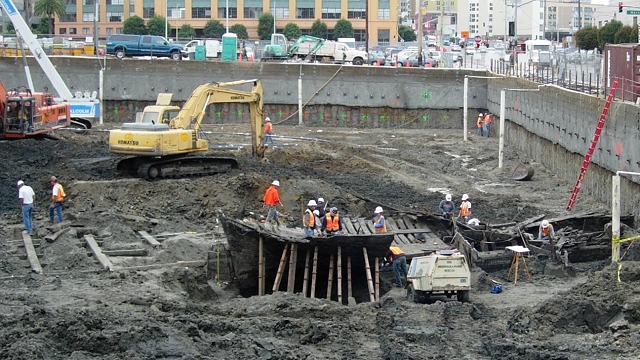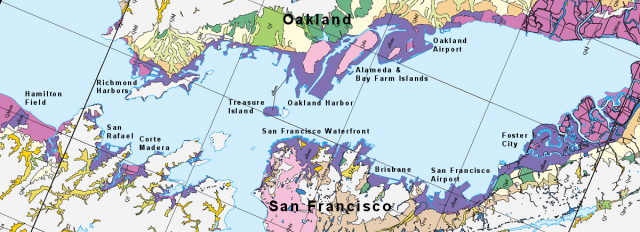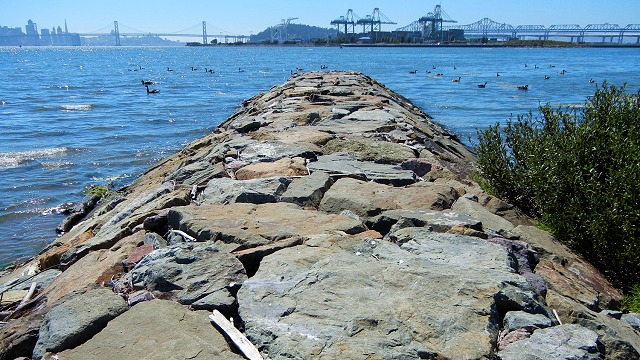
Humans have been making land for thousands of years. Lately we have gotten better at it, but nature has a head start of a few billion years, and we don't work with nature's infinite care.
On the largest scale, land grows because volcanoes and tectonic movements elevate rocks above sea level. The Bay Area has no volcanoes at present, and the basic framework of our terrain is tectonism organized around the San Andreas fault system. On the scale of human history, that's too slow to be relevant. For growing new land, erosion and deposition matter more to us.
New land grows naturally around the Bay as wetlands capture sediment washed in with the seawater. Unfortunately for builders, it's soft black mud and it's barely at sea level. And unfortunately for shippers, "bay mud" bars vessels from approaching the shore almost everywhere except around steep bodies of bedrock, like Yerba Buena and Alcatraz Islands. When Gold Rush settlers came here to stay, making bay mud into useful land—reclamation—was one of their chief concerns.
In San Francisco there were so many abandoned ships in the harbor that many were simply scuttled and buried in fill—dredged sand and mud from the Bay, mostly, along with waste rock and debris. We dig up the old ships occasionally while building around the Financial District.
More land was made elsewhere simply by diking off sections of the Bay, letting it dry out, and putting it to use growing crops or harvesting sea salt. (Today the salt ponds of the South Bay are carefully being restored to working wetland.) In San Mateo County, levees were built to create Brewer's Island around the turn of the last century. The dry bay mud served as hayfields and salt ponds until T. Jack Foster set out to turn Brewer's Island into a complete planned city. The creation of Foster City in the 1960s was overseen by geotechnical engineers, but the basic method was age-old: dredge, dump, drain.


